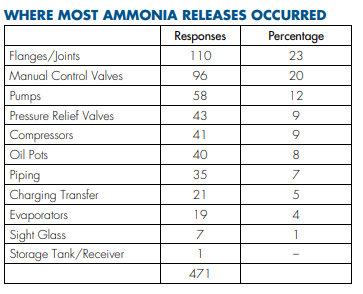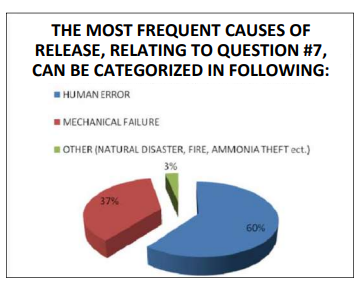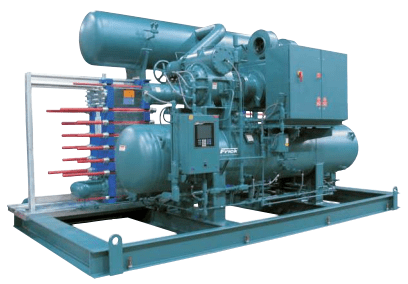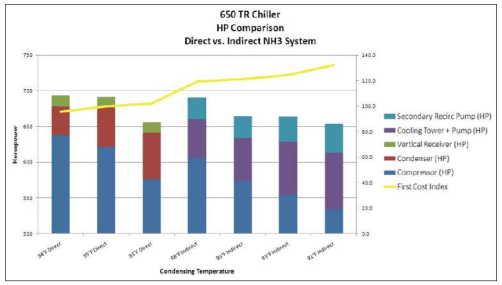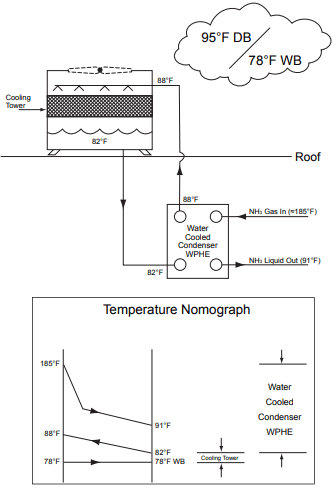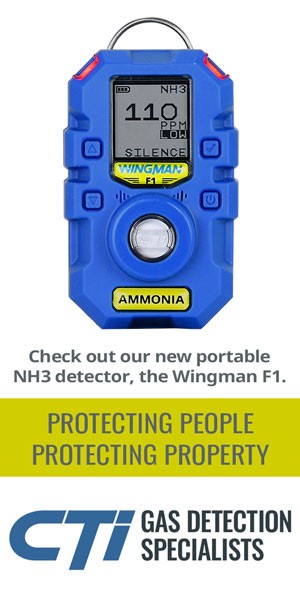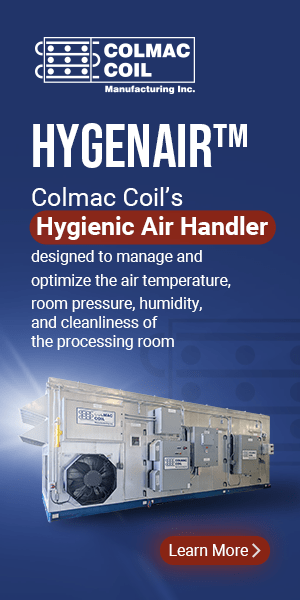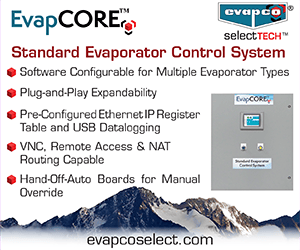Low Charge Systems May Be the Answer
By John Ansbro, GEA FES
Businesses seek to provide income to their shareholders or “bottom line.” Safe facilities are more profitable than unsafe facilities. When accidents such as ammonia leaks occur, sometimes people get hurt and even killed; and typically, at least in warehouses, large amounts of productare also destroyed. When ammonia leaks occur, business is severely disrupted; service to customers is impossible. The cost of managing a major accident, even with the protection afforded by workmen’s compensation laws and insurance, is still extremely high. Additionally, the process is very painful for the managers involved. Many customers of ammoniacontaining facilities understand that a major ammonia leak will adversely affect them and seek to make sure that such plants are well designed and safe.
Recently, the IIAR conducted a 12-question survey about ammonia releases from 700 respondents from the IIAR, RETA, and IARW. Nearly 80% of the respondents reported that their facility had more than 10,000 pounds of ammonia, thus requiring PSM. Cold storage warehouses (33%), frozen food producers (16%), and dairies at (8%) were the largest responders.
Of the 471 responses to the question of where most ammonia releases occurred, 23% reported flanges and joints, 20% manual or control valves, 12% pumps, 9% pressure relief valves, 9% compressors, and 8% oil pots.
Obviously, valves and joints were the largest leak sources. Human error counted for 60% of the releases, mechanical 37%, other 3%. Obviously, businesses can always do a better job of training people, but people make mistakes.
Designing a system which minimizes the interface between ammonia and people is probably the best way to reduce ammonia releases and the adverse consequences associated with them.
A full 37% of accidental ammonia releases were mechanical failures, which could be minimized by aggressive preventive maintenance programs. Mechanical failures can never be completely eliminated, but a well-maintained refrigeration system will not only function more efficiently, that is, consume less power, but will also result in fewer ammonia releases. Mechanical seals and corrosion dominated the mechanical failures, so these are two areas on which maintenance should be focused.
Ammonia systems have a surprisingly good record; for the preceding five-year period, over 2/3 of the respondents said that they had not experienced any ammonia releases. In those instances where a release did occur, nearly 20% reported that their facility was evacuated. Obviously, those occurrences were quite costly both in direct monetary terms and also in customer service.
How can the risk of releases be reduced? Figure 5, courtesy of General Mills, is a risk pyramid for ammonia releases. Reducing the ammonia charge addresses all of the issues in the pyramid— human exposure, accidental release, release points and system size. Reducing the ammonia charge and confining that charge to spaces in which people generally are not permitted is the most obvious and effective way to reduce injury and the high financial cost of ammonia releases.
Industrial Refrigeration Systems
Direct Ammonia Refrigeration Systems
The vast majority of ammonia refrigeration systems in the country use evaporative condensers with ammonia charged evaporators in occupied spaces. These systems certainly produce a very high level of thermal efficiency, resulting in the lowest power costs.
Indirect Ammonia Refrigeration Systems
Indirect ammonia systems have again gained popularity because the charge size can be dramatically reduced by the use of a cooling tower for heat rejection or condensing and secondary coolants, such as brine or glycol, in lieu of ammonia-containing evaporator coils. Recently, CO2 coils have been used with the CO2 acting as a volatile secondary or “evaporating brine.” The coils contain CO2 but not ammonia.
An excellent example of an indirect system is a typical, large, commercial air conditioning system, in which condensing takes place with chilled water from a cooling tower, and the refrigerant is distributed to the occupied spaces with a chilled water loop. Obviously, in a case of belowfreezing temperatures, the chilled water must be replaced with a fluid which does not freeze at the required temperatures. But the concept is simple; air conditioning systems have very low charges and keep the charge away from people.
Heat exchanger technology has improved dramatically, providing designers with the ability to cool a fluid with ammonia or cool the ammonia with another fluid such as water, much more efficiently and cost effectively than in the past. Welded plate heat exchangers, along with cooling towers, compete effectively with an evaporative condenser. Plate and frame heat exchangers are now economically available with very close approaches (3°F or 4°F) so that the loss of system efficiency can be minimized.
Low-Charge Ammonia Systems
Indirect systems using modern heat exchangers result in refrigerant charges as low as 1 lb. of ammonia per ton of refrigeration, and that 1 lb. per ton is in the compressor room and not in occupied spaces. The thermal efficiency of the low-charge ammonia systems is somewhat less than that of a direct ammonia refrigeration system but maintenance tends to be simpler and less frequent.
Heat Rejection Paradigm
Advances in cooling tower design, together with a modern heat exchanger, will permit a 13°F approach between wet bulb temperature (78°F) and the ammonia condensing temperature (91°F). This temperature difference is comprised of a 4°F approach between the leaving cooling tower water (82°F) and the air wet-bulb temperature (78°F), a 3°F approach between the water-cooled condenser exiting water temperature (88°F) and the ammonia condensing temperature (91°F). This can also be stated as a 4°F difference between the ambient air wet–bulb temperature and the leaving cooling tower water, a 6°F rise for the water in the water-cooled condenser, and a 3°F approach across the heat exchanger.
Chart A, below, compares a direct and an indirect ammonia system at about 650 tons. Referring to the chart, a system condensing at 95° F., with an evaporative condenser (Direct System), will cost about 20% less with a condenser than an Indirect System, that is, a cooling tower plus heat exchanger, but the cooling tower plus heat exchanger will consume 3% less horsepower. With a cost premium of 30%, the indirect system can be driven down to 5% less horsepower than a direct system at 95° F. condensing.
IIAR Survey Conclusion
Sixty percent of the releases were due to human failure. Improved training can reduce the failure rate, but probably not significantly. Mechanical systems, no matter how well maintained, will leak. Corrosion takes place, mechanical wear adversely affects equipment, as does vibration, etc. To the extent that the ammonia charge can be reduced and located away from people, system safety can be materially improved. Several alternative indirect systems exist, with reasonable thermal efficiency, together with reduced maintenance, cost and skill requirements which also improve safety. These systems deserve virtually every designer’s consideration.
Editor’s Note: Reduced charge ammonia refrigeration systems will reduce the opportunity for the accidental release of ammonia, as the author suggests. However, the reduction of ammonia charge can only be accomplished in 3-to 5-percent of all refrigeration systems because that is the number of new systems. The greatest improvement in safety and system operating efficiency is through improved training. This means every facility can improve its operational performance. And, as the author states, “safe facilities are more profitable than unsafe facilities.”









